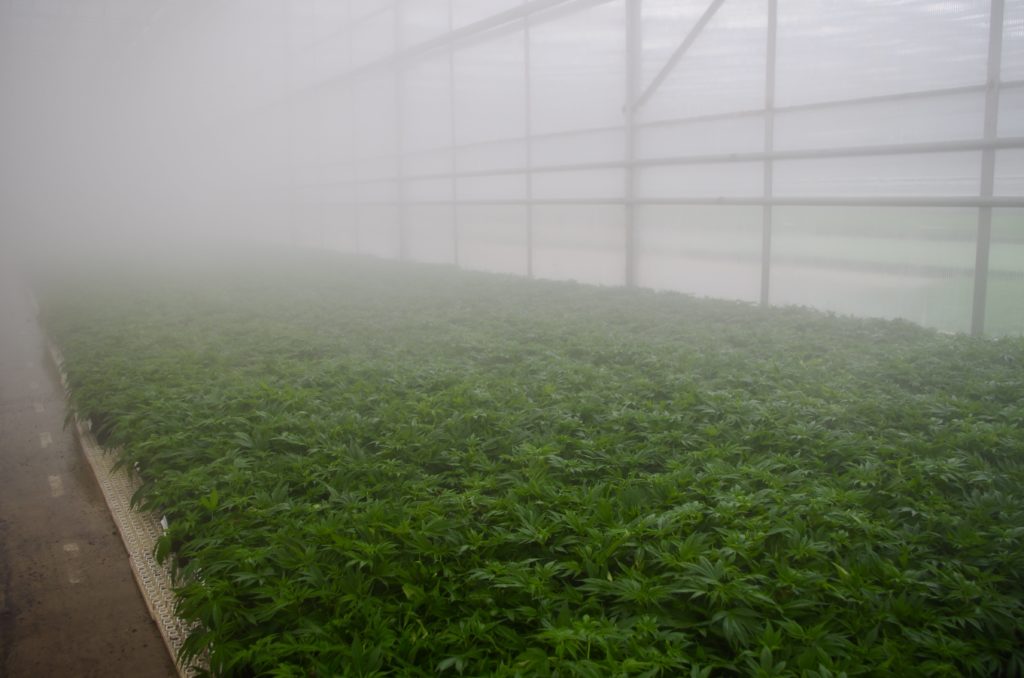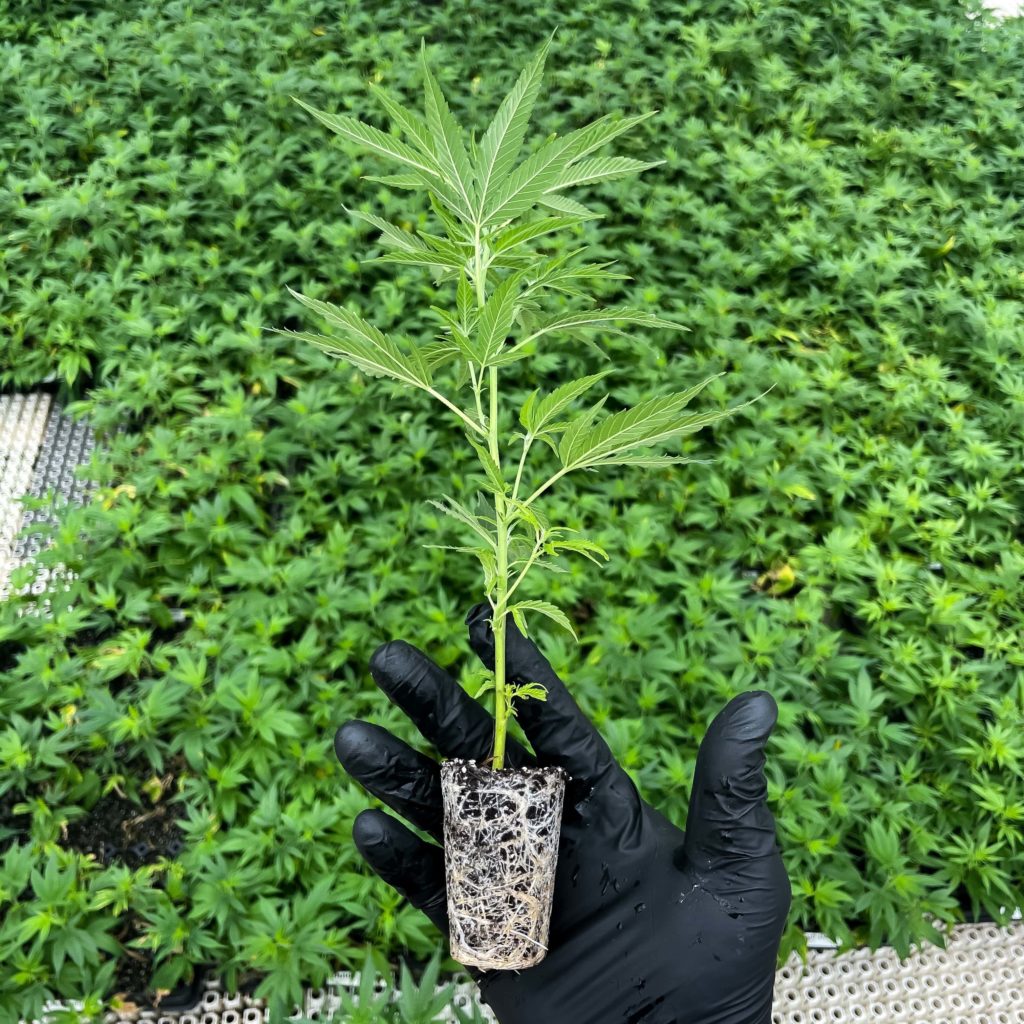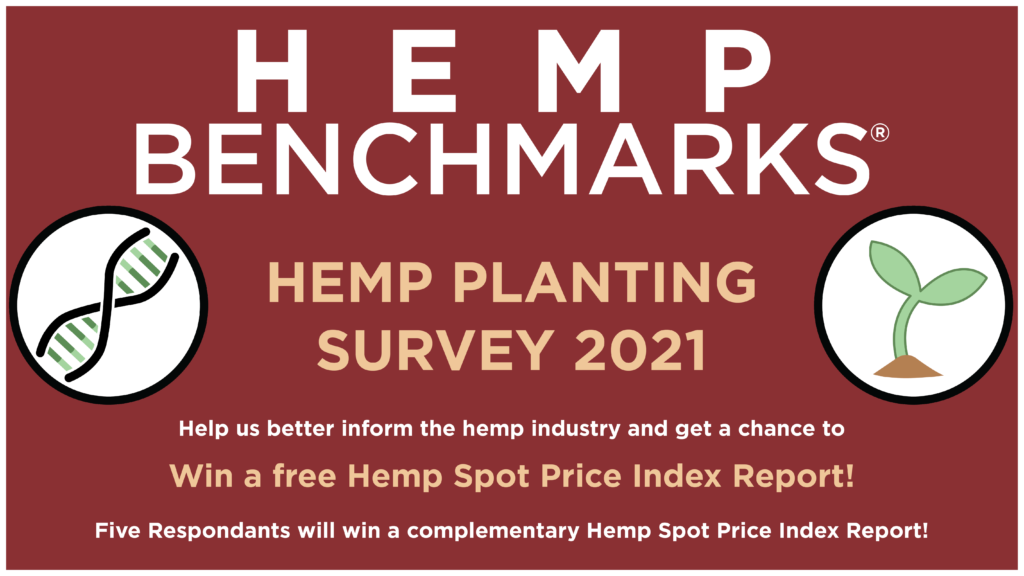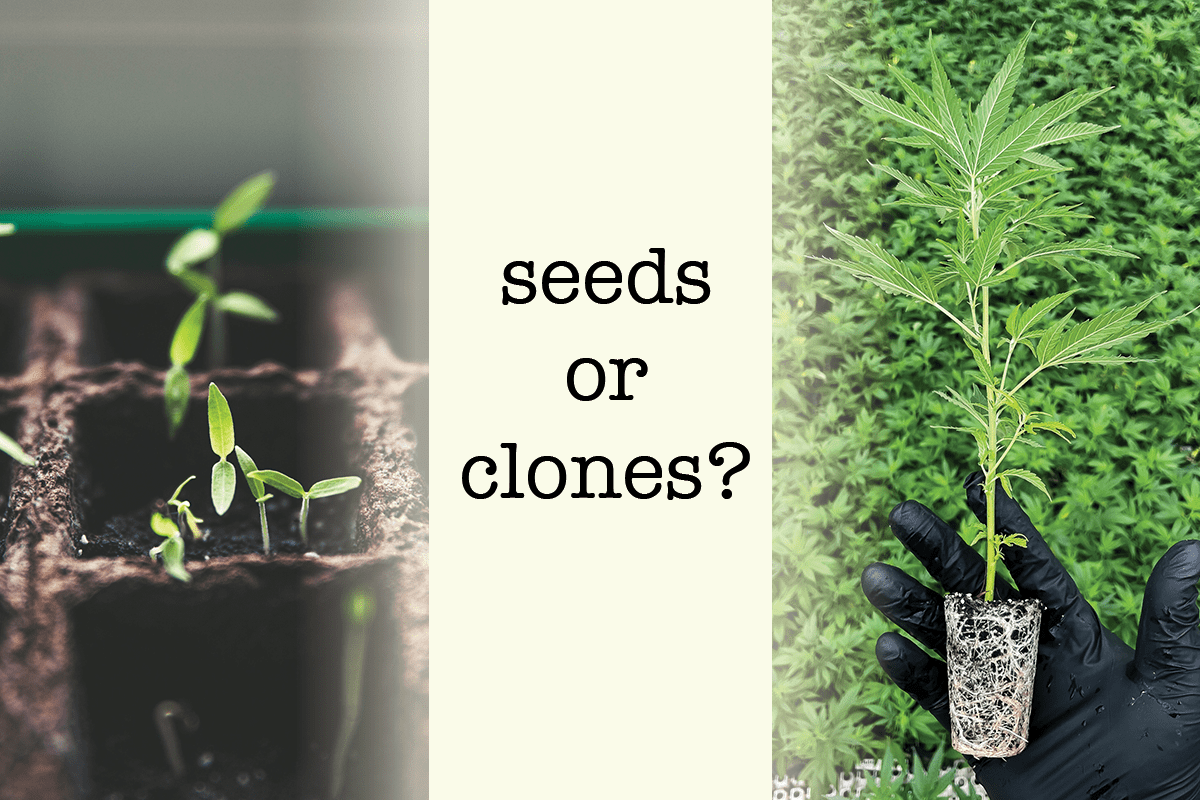
In this new age of legal hemp, with its wide variety of cannabinoid genetics now available to farmers, one of the biggest and perhaps most basic decisions one must make is whether to start a crop from seeds or clones. Hemp Benchmarks spoke with producers of both types of plant starts to find out what considerations CBD and other cannabinoid hemp growers should take into account when choosing between clones and seeds.
Genetically Identical Clones Promote Uniform Crops
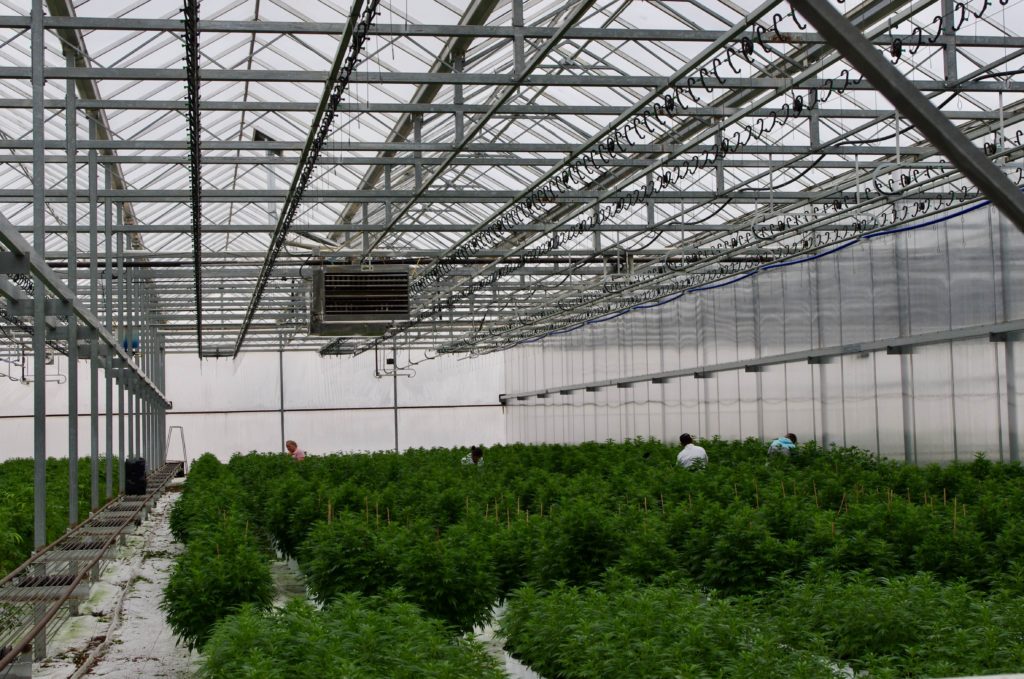
Photo Courtesy: Royale Botanicals
Royale Botanicals produces hemp clones, including USDA Certified Organic stock, and smokable CBD flower in a 10-acre greenhouse in Larkspur, Colorado. The company has been operating in the hemp industry for five years. Royale both breeds its own genetics and identifies desirable phenotypes from seed stock from which to propagate its clones.
Sam Burney, Royale’s National Sales Director, told Hemp Benchmarks that selecting genetics for the company’s clones is an 18-month process. During that time, factors such as rooting rates, cannabinoid potency, bud structure, aroma, what day-length initiates flowering, and time to maturity are examined closely. Once workable genetics are identified, they are stored in an off-site tissue culture lab, which supplies Royale’s greenhouse with clean starts for mother plants as needed.
Burney stressed that a primary attribute of clones is their genetic uniformity, which can have benefits for growers. He noted that a field of genetically identical plants grown from clones will initiate flowering simultaneously, resulting in a crop reaching maturity at the same time with consistent cannabinoid potency throughout. This can minimize potential problems such as some plants in a field being more “ripe” than others and possibly having higher-than-allowed THC levels. Such variability could result in a hot crop that has to be destroyed if those plants happen to be sampled for pre-harvest testing.
Also in regard to the harvest period, bringing in a uniform crop is easier and more efficient than one in which plants vary in size and other physical characteristics, especially when using mechanized harvesters.
Photos Courtesy: Royale Botanicals
Seed Consistency Improving; Certified Seeds Provide Additional Assurance
Don Robison – Seed Administrator at the Office of the Indiana State Chemist and head of the state’s hemp program – told Hemp Benchmarks earlier this year that a survey of Indiana hemp growers revealed 67% were satisfied with their genetics suppliers in 2020, while 20% said they were dissatisfied to some degree. Robison characterized the results as “almost a complete flip-flop” from a survey conducted after the 2019 season.
Some CBD hemp seed is receiving more formal credentials. In February, the agricultural technology company Arcadia Biosciences announced that four of its hemp cultivars had received certification from the Association of Official Seed Certifying Agencies (AOSCA). Arcadia’s newly-certified varieties are all high-CBD cultivars with distinct traits. In an April interview with Hemp Benchmarks, Arcadia CEO Randy Shultz stated, “What AOSCA looks for is uniformity.” Previously, in a February conversation, he described the process of obtaining AOSCA certification. According to Shultz, AOSCA requires two years of data on a cultivar from multiple growing locations in order to fulfill its mission of promoting genetic purity and uniformity.
Those seeking AOSCA certification must compile information such as germination rates, feminization rates, measurements of leaves and internodes, and other plant characteristics across multiple fields and lots. An example of Arcadia’s efforts in gaining AOSCA certification included running 16 separate trials of their Rogue variety. Some of those trials were performed with the assistance of university partnerships with institutions such as Cornell University in New York and Oregon State University.
Shultz acknowledged that, right now, if one were to observe two hemp fields side-by-side – one started from clones and the other from seeds – that one might see a bit more variation in the crop started from seeds. However, he pointed out that breeding programs are designed to drive out such variability. Finally, he noted that complete genetic uniformity can also mean uniform susceptibility to particular pest or disease vectors, and “a little bit of genetic variability is like an insurance policy in the field.”
How are you planting your hemp crop this year? Let us know and have a chance to win a free Hemp Spot Price Index Report.
Logistical Considerations: Equipment, Timing, Facilities, Costs
Depending on one’s existing operation, either seeds or clones may be a more natural fit. For example, farmers who grow crops such as tobacco, as well as outdoor growers of some fruits and vegetables, already have the equipment for and experience with beginning crops from clones. On the other hand, row crop farmers who are used to planting seed with a grain drill might find planting clones to be too much of an adjustment from their normal procedures.
Timing is another factor to consider. Indoor or greenhouse growers who are aiming to stick to tight harvest schedules and avoid potential issues that can come from propagating in-house may decide that receiving regular shipments of clones to start their crops is preferable. For outdoor growers, seeds may allow more flexibility in deciding when to plant if inclement weather occurs or other conditions are not ideal. Sam Burney of Royale Botanicals pointed out that, in regard to clones, planning and coordination between outdoor growers and clone suppliers is important so that the clones can be delivered and planted at a proper time to provide the ideal vegetative period before day-length triggers flowering, which will vary in different regions across the country.
If not planting seed directly in the field, another basic consideration is whether an operation or facility has the resources and the space to start and rear seedlings before planting them outside. This also raises the question of costs. Our Hemp Benchmarks Spot Price Index Reports consistently show that per-seed prices for Feminized CBD Seed are significantly lower than those for CBD clones. However, Burney noted that growers who are planning to start seedlings indoors or in a greenhouse for a period before planting them outside must consider the costs that come along with doing so. Burney also stressed that it is a misconception that clones cannot be used to propagate large-scale outdoor crops. He stated that Royale Botanicals has supplied hundreds of thousands of clones to individual plots of hundreds of acres.
Finally, it is unfortunately the case that some unscrupulous parties selling hemp genetics still exist in the industry. This fact, combined with the significant production of hemp seed by breeders of all stripes in recent years, raises the possibility that one could purchase old seed. Don Robison of Indiana, quoted above, has performed studies that show that germination rates for hemp seed can drop precipitously after a year or more, an issue one does not have to consider with clones.
However, AOSCA-certified seed comes with a “blue tag,” which includes when the batch of seed was tested for germination rates and other factors. Seed certified by other bodies, such as some state agriculture departments, also comes with specific labeling requirements that tell buyers the same information. According to both Robison and Shultz of Arcadia, falsification of such tags and labels is extremely rare.
Looking Ahead
Given the hemp industry’s prospects for expansion and diversification in the years to come, it is likely that both clones and seeds will find their place amongst different types of cannabinoid hemp producers. Burney of Royale believes that when big consumer packaged goods (CPG) companies begin to add CBD or other hemp extracts in large quantities to foods, beverages, and other products, crops started from clones will be a good fit for their supply chains due to their uniformity and consistency.
Of course, major CPG companies already incorporate products derived from seed-grown crops such as corn and soybeans in their product lines. While not necessarily the case with all hemp seed on the market, Shultz pointed out that Arcadia’s hemp breeding program is modeled after corn, in which two inbred parents produce hybrid seed. He noted that despite some genetic variability, corn fields are highly uniform, as anyone who has driven past one will recognize. And although hemp genetics are not at that point yet, Shultz said of hemp crops started from seed, “the uniformity is pretty good and it’s going to get better.”
More on the 2021 planting season to come in the May 2021 Hemp Spot Price Index Report
